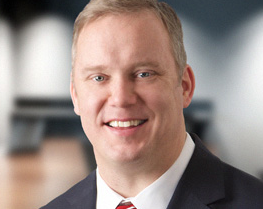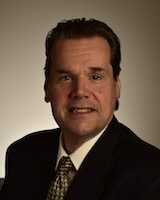 On Monday, December 17, 2018, the New York Intellectual Property Association (“NYIPLA”) filed an amicus brief in support of neither party in Return Mail, Inc. v. United States Postal Service, No. 17-1594 (U.S.).
On Monday, December 17, 2018, the New York Intellectual Property Association (“NYIPLA”) filed an amicus brief in support of neither party in Return Mail, Inc. v. United States Postal Service, No. 17-1594 (U.S.).
In the proceedings below, the Patent Trial and Appeal Board (“PTAB”) issued a final written decision in a Covered Business Method patent review (“CBM”) proceeding instituted based on a petition by the U.S. Postal Service (“USPS”), invalidating certain claims of a patent owned (and asserted in the U.S. Court of Federal Claims) by Return Mail, Inc. USPS is a “government entity” as recognized in United States Postal Serv. v. Flamingo Indus. (USA) Ltd., 540 U.S. 736, 748 (2004). The U.S. Court of Appeals for the Federal Circuit (“Federal Circuit”) affirmed the PTAB’s holding that USPS has standing to file a petition to institute a CBM proceeding.
The U.S. Supreme Court granted Return Mail’s petition for a writ of certiorari on the question of whether the government is a “person” who may petition to institute review proceedings under the AIA.
While the NYIPLA took no position as to the ultimate merits of Petitioner Return Mail’s underlying position, i.e., whether the government is a “person” who may petition to institute a CBM proceeding under AIA § 18(a)(1)(B), the NYIPLA argued that it strongly believes that the Court should carefully consider the potential implications of interpreting “person” in Title 35 of the U.S. Code (“Patent Act”) and the AIA as including or excluding the government generally, and then issue only a narrow holding on the scope of “person” under AIA § 18(a)(1)(B) and, if at all, under 35 U.S.C. §§ 311(a) and 321(a).
In its brief, the NYIPLA argued that while the general rule is that “person” should be interpreted to exclude a sovereign, that rule is flexible and must be adjusted to the circumstances of the particular statute. United States v. Cooper Corp., 312 U.S. 600, 604-05 (1941). In the context of the Patent Act, the use of the term “person” is inconsistent and, consequently, the term must be defined in the context of the particular section in which it is used. Reliance upon the general definitions is inappropriate in light of how the definition of “person,” vis-a-vis governmental entities, functions within the context of the Patent Act.
The NYIPLA also urged that, despite the broad wording of the question presented, the holding in this case be expressly limited to construing “person” for purposes of CBM proceedings under Section 18 of the AIA, leaving the question for IPRs and PGRs open for decision on another day in a factually more appropriate vehicle.
In its brief, the NYIPLA also pointed out that prior to Congress’ enactment of the AIA, the U.S. Patent and Trademark Office’s practice, as reflected in the Manual of Patent Examining Procedure, was that “persons” who could request ex parteand inter partesreexaminations included governmental entities. The legislative context relating to creation of post-issuance patent review proceedings and the PTO’s longstanding interpretation of “person” to include the governmental entities for purposes of ex parteandinter partesreexaminations together support the interpretation that the government is a “person” who may petition to institute IPR and PGR proceedings under the Patent Act. However, the context of CBM proceedings is not the same and may lead to a different conclusion.
Although the NYIPLA took no position on the merits of this dispute, it urged the Court to construe the meaning of “person” in the AIA based on the context of each specific provision in which it is used, and consonant with the noted internal inconsistency within the Patent Act, and to avoid any broad pronouncement on the meaning of “person” as generally used in the Patent Act, or otherwise.
The followings are excerpts on the internal inconsistency of the use of “person” throughout the Patent Act taken from the amicus brief.
I. There is no global definition of “person” in the Patent Act or the AIA
A review of the use of the term “person” throughout Title 35 of the U.S. Code and the AIA reflects the inescapable conclusion that “person” cannot have a global definition in the Patent Act, but must be tied to the specific language of the relevant provision of the Patent Act. Thus, this Section analyzes the various instances in which the term “person” is used in the Patent Act to demonstrate that there is no single consistent use that will reflect whether a government entity like the USPS should be considered a “person” for purpose of 35 U.S.C. § 311(a), 35 U.S.C. § 321(a) and AIA § 18(a)(1)(B).
A. Implications of Interpreting “Person” to Include the Government
Some provisions of the Patent Act would not makeany sense if they are construed as requiring “person” to include a governmental entity.
For example, Sections 3(a)(1) (identifying who can be the “Director”) and 6(a) (identifying who can be an “administrative patent judge”) use the term “person” to specify an individual and not an entity (government or otherwise):
The Director shall be a person who has a professional background and experience in patent or trademark law.
35 U.S.C. § 3(a)(1).
The administrative patent judges shall be persons of competent legal knowledge and scientific ability who are appointed by the Secretary, in consultation with the Director.
35 U.S.C. § 6(a).
Of course, a “person” or “persons” in both of these sections could include an individual in a government office acting in an official capacity.
Other provisions, discussing inventors, likewise suggest that “person” or “persons” as used in the Patent Act in this context identify an individual who is an inventor and not to an entity (government or otherwise):
When an invention is made by two or more persons jointly, they shall apply for patent jointly and each make the required oath [that specifies the individuals who conceive and reduce to practice the invention], except as otherwise provided in this title.
35 U.S.C. § 116(a).
Whenever through error a person is named in an application for patent as the inventor, or through an error an inventor is not named in an application, the Director may permit the application to be amended accordingly, under such terms as he prescribes.
35 U.S.C. § 116(c).
Whenever through error a person is named in an issued patent as the inventor, or through error an inventor is not named in an issued patent, the Director may, on application of all the parties and assignees, with proof of the facts and such other requirements as may be imposed, issue a certificate correcting such error.
35 U.S.C. § 256(a).
In this context, a “person” seems to be the individual that conceived the invention, and not an entity (such as the applicant or assignee). Of course, since Federal agencies may apply for patents on inventions[1] made by individuals working for the agency, such “persons” could include a person in a government office.
Similarly, in Section 201(c), “contractor” is defined to include “any person,” which is distinguished from, and therefore is identified to be different from, a “small business firm” or “nonprofit organization”:
The term “contractor” means any person, small business firm, or nonprofit organization that is a party to a funding agreement.
35 U.S.C. § 201(c). Thus, in this context, a “person” seems to be an individual, and not an entity (e.g., small business firm, or nonprofit organization). Hence, here, “person” also is distinct from, and does not appear to include, a government entity.
Further, Section 211 discusses “person” in a manner that would be inconsistent with including a government entity:
Nothing in this chapter shall be deemed to convey to any person immunity from civil or criminal liability, or to create any defenses to actions, under any antitrust law.
35 U.S.C. § 211. This section suggests that “person” would not need to include government entities, since such entities would not need immunity from civil or criminal liability. However, “person” could include an individual working for the government, who may need such immunity.
Thus, in each of these instances, “person” is used in the Patent Act in a manner that would be inconsistent with defining it to include a government entity but could in at least some instances include an individual employed by the government, acting in his or her official capacity.
B. Implications of Interpreting “Person” to Exclude the Government
Other provisions of the Patent Act would lead to bizarre results if “person” were universally construed to exclude government entities.
For example, Section 207(a)(1) provides that a Federal agency can apply for, obtain, maintain and own patents (seenote 1supra). Accordingly, it would make no sense for purposes of Section 102, which defines what is prior art and what can be excluded from prior art, to adopt a construction of “person” to exclude the government. Section 102, in part, reads as follows:
(a) A person shall be entitled to a patent unless—
(1) the claimed invention was patented, described in a printed publication, or in public use, on sale, or otherwise available to the public before the effective filing date of the claimed invention; or
(2) the claimed invention was described in a patent issued under section 151, or in an application for patent published or deemed published under section 122(b), in which the patent or application, as the case may be, names another inventor and was effectively filed before the effective filing date of the claimed invention.
(b)(2)(C) A disclosure shall not be prior art to a claimed invention under subsection (a)(2) if . . . the subject matter disclosed and the claimed invention, not later than the effective filing date of the claimed invention, were owned by the same person or subject to an obligation of assignment to the same person.
35 U.S.C. §§ 102(a) and 102(b)(2)(C).
If the scope of “person” in Section 102 excludes government entities, that means either such government entities are not entitled to patents under Section 102(a), which is inconsistent with 35 U.S.C. § 207(a)(1), or the government’s patents are not invalid under the conditions of Section 102(a). Further, under such a construction, government patents would not be entitled to the exclusion set forth in Section 102(b)(2)(C). Neither of these interpretations can be correct.
Not only would excluding government entities from the meaning of “person” throughout the Patent Act lead to bizarre results with respect to prior art, but it would also lead to strange results with respect to Section 207(a)(1), as applied to other provisions of the Patent Act:
A person to whom the inventor has assigned or is under an obligation to assign the invention may make an application for patent. A person who otherwise shows sufficient proprietary interest in the matter may make an application for patent on behalf of and as agent for the inventor on proof of the pertinent facts and a showing that such action is appropriate to preserve the rights of the parties. If the Director grants a patent on an application filed under this section by a person other than the inventor, the patent shall be granted to the real party in interest and upon such notice to the inventor as the Director considers to be sufficient.
35 U.S.C. § 118.
An application for patent for an invention filed in this country by any person who has, or whose legal representatives or assigns have, previously regularly filed an application for a patent for the same invention in a foreign country which affords similar privileges in the case of applications filed in the United States or to citizens of the United States, or in a WTO member country, shall have the same effect as the same application would have if filed in this country on the date on which the application for patent for the same invention was first filed in such foreign country, if the application in this country is filed within 12 months from the earliest date on which such foreign application was filed.
35 U.S.C. § 119(a).
Notwithstanding any other provisions of law any person, and his successors, assigns, or legal representatives, shall not receive a United States patent for an invention if that person, or his successors, assigns, or legal representatives shall, without procuring the license prescribed in section 184, have made, or consented to or assisted another’s making, application in a foreign country for a patent or for the registration of a utility model, industrial design, or model in respect of the invention. A United States patent issued to such person, his successors, assigns, or legal representatives shall be invalid, unless the failure to procure such license was through error, and the patent does not disclose subject matter within the scope of section 181.
35 U.S.C. § 185.
If the scope of “person” excludes the government, the governmental entities do not need foreign filing license to file applications abroad.
In addition to 35 U.S.C. § 207(a)(1) authorizing Federal agencies to apply for patents, 37 C.F.R. § 1.46 makes clear that “person” includes assignees, which would include government entities.[2]
Construing “person” in Sections 252 and 318 regarding reissued patents as excluding government entities would likewise lead to the strange result of denying the government intervening rights:
A reissued patent shall not abridge or affect the right of any person or that person’s successors in business who, prior to the grant of a reissue, made, purchased, offered to sell, or used within the United States, or imported into the United States, anything patented by the reissued patent, to continue the use of, to offer to sell, or to sell to others to be used, offered for sale, or sold, the specific thing so made, purchased, offered for sale, used, or imported unless the making, using, offering for sale, or selling of such thing infringes a valid claim of the reissued patent which was in the original patent.
35 U.S.C. § 252.
Any proposed amended or new claim determined to be patentable and incorporated into a patent following an inter partes review under this chapter shall have the same effect as that specified in section 252 for reissued patents on the right of any person who made, purchased, or used within the United States, or imported into the United States, anything patented by such proposed amended or new claim, or who made substantial preparation therefor, before the issuance of a certificate under subsection (b).
35 U.S.C. § 318(c); see also 35 U.S.C. § 328(c).
Further, if “person” were to universally exclude government entities, then it would mean that such entities would not be entitled to cite prior art to the Office or institute ex partereexaminations:
Any person at any time may cite to the Office in writing—
(1) prior art consisting of patents or printed publications which that person believes to have a bearing on the patentability of any claim of a particular patent; or
(2) statements of the patent owner filed in a proceeding before a Federal court or the Office in which the patent owner took a position on the scope of any claim of a particular patent.
35 U.S.C. § 301 (2012 ed.).
Any person at any time may file a request for reexamination by the Office of any claim of a patent on the basis of any prior art cited under the provisions of section 301.
35 U.S.C. § 302. Such a position would be inconsistent with current PTO practice as set forth in MPEP § 2203 (citing prior art) and MPEP § 2212 (ex parte reexamination) and contrary to the historical practice as discussed in Section III infra.[3]
Finally, in at least one instance, Congress explicitly noted that “person” includes “government entities”:
Any State, any instrumentality of a State, and any officer or employee of a State or instrumentality of a State, acting in his official capacity, shall not be immune, under the eleventh amendment of the Constitution of the United States or under any other doctrine of sovereign immunity, from suit in Federal court by any person, including any governmental or nongovernmental entity, for infringement of a patent under section 271, or for any other violation under this title.
35 U.S.C. § 296(a).
In view of the foregoing, it is clear that in some provisions of the Patent Act, the term “person” necessarily should be interpreted to include the government (e.g., 35 U.S.C. § 296(a), expressly including government in the definition of “person”), while in other provisions the term “person” should be interpreted to exclude the government (see, e.g., 35 U.S.C. §§ 3(a) and 6(a), which clearly exclude the governmental entities like the USPS, but would include individuals in the government’s employ).
Accordingly, reliance on universal definitions from the Dictionary Act, 1 U.S.C. §§ 1 and 8, governing the U.S. Code in general, and likewise on other general definitions of “persons” from relevant case law (e.g., Cooper), may well cause inadvertent problems with respect to the Patent Act. Rather, as set forth below, the answer to the question posed by this case should depend on the legislative context relating to creation of various post-issuance patent challenge proceedings and the PTO’s longstanding interpretation of “person” to include the governmental entities for purposes of ex parte and inter partes reexaminations. Cf. Cooper, 312 U.S. at 604-05 (“[T]here is no hard and fast rule of exclusion. The purpose, the subject matter, the context, the legislative history, and the executive interpretation of the statute are aids to construction which may indicate an intent, by the use of the term, to bring state or nation within the scope of the law.”).
________________
[1] Cf.35 U.S.C. § 207(a)(1) (“Each Federal agency is authorized to . . . apply for, obtain, and maintain patents or other forms of protection in the United States and in foreign countries on inventions in which the Federal Government owns a right, title, or interest . . . .”).
[2] See37 C.F.R. § 1.46(a) (“A person to whom the inventor has assigned or is under an obligation to assign the invention may make an application for patent.”).
[3] SeeMPEP § 2203 (9thed. Rev. 08.2017, Jan. 2018) (“35 U.S.C. 301 states that ‘Any person at any time may cite to the Office. . . . ‘ ‘Any person’ may bea corporate or governmental entityas well as an individual.”); MPEP § 2212 (9thed. Rev. 08.2017, Jan. 2018) (“35 U.S.C. 302 and 37 CFR 1.510(a) both indicate that ‘any person’ may file a request for reexamination of a patent. Accordingly, there are no persons who are excluded from being able to seek reexamination. Corporations and/or governmental entities are included within the scope of the term ‘any person’.”).
Image Source: Deposit Photos

![[IPWatchdog Logo]](https://ipwatchdog.com/wp-content/themes/IPWatchdog%20-%202023/assets/images/temp/logo-small@2x.png)

![[[Advertisement]]](https://ipwatchdog.com/wp-content/uploads/2024/04/Patent-Litigation-Masters-2024-banner-early-bird-ends-Apr-21-last-chance-938x313-1.jpeg)





![[Advertisement]](https://ipwatchdog.com/wp-content/uploads/2024/04/Patent-Litigation-Masters-2024-sidebar-early-bird-ends-Apr-21-last-chance-700x500-1.jpg)

![[Advertisement]](https://ipwatchdog.com/wp-content/uploads/2021/12/WEBINAR-336-x-280-px.png)
![[Advertisement]](https://ipwatchdog.com/wp-content/uploads/2021/12/2021-Patent-Practice-on-Demand-recorded-Feb-2021-336-x-280.jpg)
![[Advertisement]](https://ipwatchdog.com/wp-content/uploads/2021/12/Ad-4-The-Invent-Patent-System™.png)







Join the Discussion
One comment so far.
Anon
December 20, 2018 10:40 amThe “102 person” argument used here does not properly portray the context of how that section is to be read.
The reading of the section is geared to the original inventor — an item exemplified in the Stanford v. Roche case — and to which, the AIA was very clear that it was NOT changing.
The better contextual understanding for those section then is to read person as real person and that privies of that real person (which may well include juristic persons including a Soveriegn. This type of reading does not constrain and better distinguishes the question to the Court.